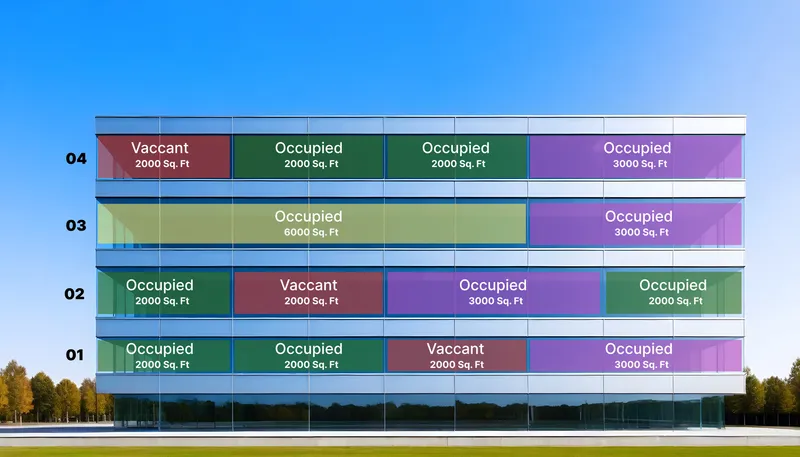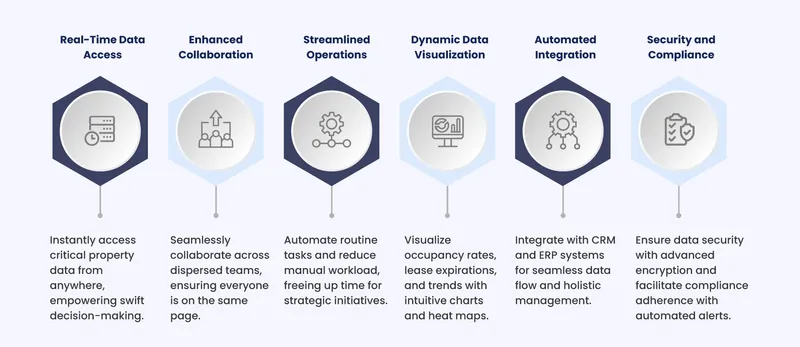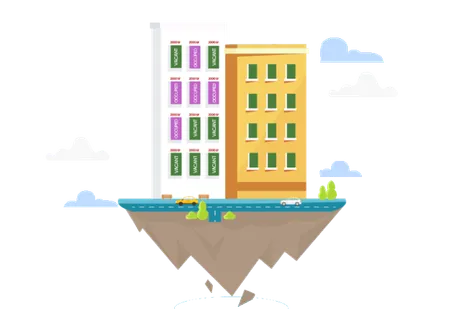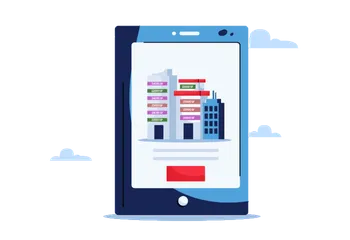

As the global workforce continues to pivot towards remote operations, the real estate industry faces unprecedented challenges and opportunities.
The traditional paradigms of property management and leasing strategies are being reshaped by the necessity for flexibility, efficiency, and instantaneous access to accurate data. In this transformative era, cloud-based technologies, especially stacking plan software, have emerged as indispensable tools for real estate professionals. These platforms are not just facilitating the remote management of complex real estate portfolios but are also enhancing collaboration across geographically dispersed teams. This blog article delves into how cloud-based stacking plan software is revolutionizing the real estate sector by providing robust solutions that cater to the dynamic needs of modern businesses.
The landscape of real estate management is rapidly changing. The global shift toward remote work has not only altered where people work but also how properties are managed and leased. Traditional methods that depend on in-person assessments and paper-based documentation are becoming obsolete in the face of demands for greater agility and faster decision-making. Remote teams require access to real-time data and the ability to collaborate from various locations without geographical constraints. This shift has catalyzed the adoption of advanced digital tools that can handle complex data, provide comprehensive visibility into assets, and facilitate strategic decision-making from anywhere in the world.

The importance of technological solutions cannot be overstated. Cloud-based stacking plan software, for example, offers a robust platform for real estate professionals to streamline operations by automating routine tasks and ensuring that all team members, regardless of their location, have access to the same updated information. These tools support not just operational efficiency but strategic planning and compliance management, which are vital for maintaining competitiveness in a dynamic market. For business owners and real estate managers, investing in the right technology is not just about keeping up with trends; it's about setting a foundation for scalable, sustainable growth and resilience against market fluctuations.
Cloud-based solutions are revolutionizing how teams operate and interact. These technologies provide essential tools that enable immediate access to critical data and foster enhanced collaboration among dispersed teams.
Cloud-based stacking plan software empowers real estate teams to manage property data from any location, ensuring that critical information is always within reach. This immediate accessibility allows for real-time updates, which is crucial in a market where conditions can change rapidly. The ability to access and update leasing details, occupancy rates, and other key metrics in real-time supports swift decision-making and can significantly enhance the responsiveness of property management operations.
The nature of cloud-based software offers multi-user access, which is instrumental in bridging the gap between team members scattered across different geographical locations and time zones. This feature facilitates seamless collaboration, allowing users to share updates, insights, and critical data without delays. For example, a property manager in New York can update lease terms or occupancy status, and a team member in Los Angeles will see these updates immediately. Such synchronized communication not only boosts productivity but also enhances the efficiency of managing large and diverse property portfolios. This interconnected approach ensures that all team members are on the same page, making collaborative efforts more effective and reducing the likelihood of errors or oversights.
These capabilities of cloud-based stacking plan software streamline operations and support a cohesive workflow among remote teams, proving essential for modern real estate management.
Stacking plan software has evolved significantly, harnessing the power of modern technology to transform real estate management. With features like dynamic data visualization and comprehensive API integrations, these tools not only simplify data management but also enhance decision-making processes.

Modern stacking plan software incorporates advanced data visualization tools, including dynamic charts and heat maps. These features offer intuitive visual representations of data, such as occupancy rates, lease expirations, and rental price trends, across a property portfolio. By providing a clear, visual snapshot of key performance indicators, heat maps enable property managers and stakeholders to quickly assess the status of their properties and make informed decisions. This capability not only streamlines the analysis process but also highlights areas of concern or opportunity in a way that traditional spreadsheets simply cannot match.
The integration capabilities of contemporary stacking plan software extend its functionality significantly. Through API access, these systems can seamlessly connect with other business management tools such as Customer Relationship Management (CRM) and Enterprise Resource Planning (ERP) systems. This integration facilitates the automatic flow of data across different platforms, reducing the need for manual data entry and minimizing the risk of errors. For real estate businesses, this means a more cohesive, holistic approach to managing data across various aspects of the organization, from tenant management and leasing to financial accounting and reporting. The technical edge provided by such integration ensures that all systems are updated in real time, enhancing overall operational efficiency and strategic decision-making.
Cloud-based stacking plan software offers strategic advantages that are indispensable for real estate teams. This technology facilitates not only a reduction in manual workload through automation but also enhances decision-making with real-time reporting and analysis.

Cloud-based stacking plan software significantly reduces the manual workload for remote real estate teams by automating many routine tasks. This automation ranges from tenant data entry to updating lease statuses and calculating financial projections. By minimizing the reliance on manual data entry, teams can allocate more time and resources to strategic tasks such as market analysis, investment planning, and tenant relations. This shift not only boosts productivity but also reduces the potential for human error, enhancing the overall accuracy and reliability of property management operations.
One of the key advantages of advanced stacking plan software is its ability to generate real-time reports and analytics. This feature is particularly valuable for remote teams that rely on timely and accurate data to make informed decisions. With instant access to reports on lease expirations, vacancy rates, and tenant demographics, managers can quickly assess the health of their portfolios and respond to changes effectively. This capability ensures that all team members, regardless of their location, have the most current data at their fingertips, facilitating a proactive approach to property management and strategic planning.

In the digital age, data security is paramount, especially when managing sensitive real estate information remotely. Cloud-based stacking plan software addresses this critical need through the implementation of advanced security protocols. Features such as end-to-end encryption and multi-factor authentication ensure that all data transmitted and stored within the system is protected against unauthorized access and breaches. These security measures are essential for maintaining the integrity and confidentiality of property data, providing peace of mind to business owners and property managers who rely on remote access for their operations.
Compliance with local regulations and standards is a significant challenge for real estate businesses, particularly those operating across various jurisdictions. Stacking plan software simplifies this aspect of property management by incorporating tools that help ensure properties meet all relevant legal requirements. The software can be configured to alert managers about compliance deadlines, such as those for safety inspections or lease renewals, and can also be updated to reflect changes in regulations. This compliance support is invaluable for dispersed teams, reducing the risk of penalties or legal issues and ensuring smooth, uninterrupted operations.
Cloud-based stacking plan software stands as a beacon of innovation in the realm of remote real estate management. From immediate data access to enhanced collaboration, these tools offer indispensable solutions for modern businesses.
By leveraging dynamic data visualization, automated integration, and real-time reporting, teams can streamline operations and make informed decisions swiftly.

Furthermore, the robust security measures and compliance features of this software ensure data protection and regulatory adherence, bolstering trust and operational integrity. In embracing these technologies, real estate professionals equip themselves to navigate remote challenges effectively, driving efficiency, growth, and success in a rapidly evolving industry landscape.
Industry Insights


No-obligation demo
By Submitting this form, you agree to be contacted by the representatives of realestatestackingplan.com